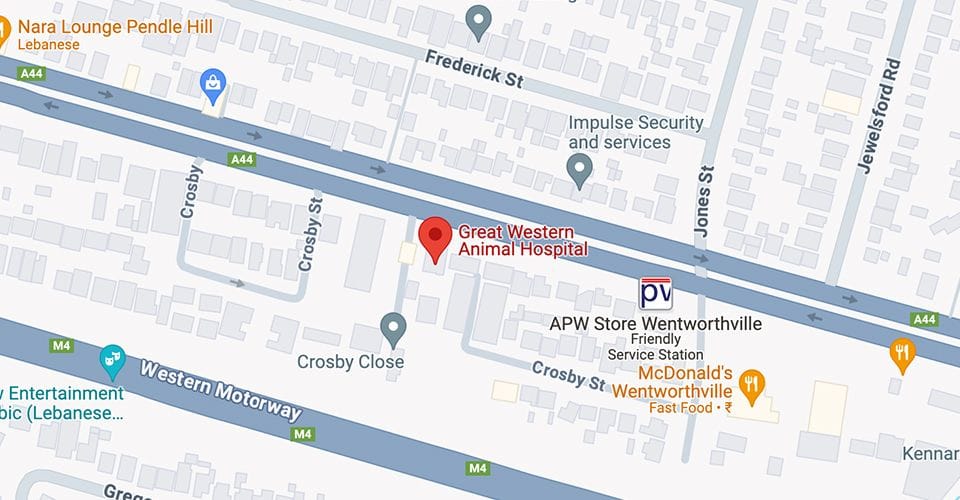All vet practices perform desexing as a routine procedure but we make sure your animal receives the highest quality care.
Pet Desexing
All vet practices perform desexing as a routine procedure but we make sure your animal receives the highest quality care.
Dogs & Cats
If you are considering desexing your pet, we recommend discussing the best timing with your veterinarian at their Juvenile Health Check. The latest guidelines from the World Small Animal Veterinary Association (WSAVA) suggest that desexing should be tailored to individual circumstances, rather than applying a blanket recommendation.
General Recommendations by Breed Size
- Large and Giant Breed Dogs: Desex at 18 months or older
- Medium Breed Dogs: Desex between 12-18 months
- Small Breed Dogs: Desex between 6-12 months
- Cats: Desex at 6 months of age
(For breed-specific recommendations, please consult with your vet or check out our blog post..)
- Your pet will require a general anaesthetic, meaning they must not eat the morning of the surgery.
- Water is fine to give and should not be withheld.
- Every patient receives a thorough clinical exam prior to surgery.
- We only use the safest anaesthetics and ensure patients receive oxygen support via an endotracheal tube.
- An IV catheter is placed prior to the operation.
- IV fluids are administered to maintain blood pressure.
- A nurse trained in anaesthetics monitors your pet at all times.
- We use monitoring equipment to track your pet’s condition under anaesthesia.
- Pain relief is provided before and after surgery.
- Patients are kept warm and comfortable throughout the procedure and recovery.
- We recommend pre-anaesthetic blood testing to assess liver and kidney function and detect any hidden problems before anaesthesia.
Surgical Procedures
Female Dogs & Cats
Desexing for female pets involves the removal of the uterus and ovaries, meaning they will no longer come into season. There is another surgical option called an ovary-sparing spay (OSS) in which the uterus is removed, yet one or both ovaries remain, allowing the female hormones to continue functioning. This approach is believed to provide certain health advantages, such as maintaining natural hormone levels that may support healthy bone density, reduce chance of joint disease (particularly in large breed dogs), reduce risk of some cancers (see breed specific risks in our blog), metabolism (reduce obesity) and coat condition. By removing the uterus, there is no risk of pregnancy or life-threatening uterine infections like pyometra. However, pets may still go through heat cycles—often less noticeable—yet can still attract male animals. The surgery itself differs from a traditional spay in that the veterinarian preserves ovarian tissue while carefully extracting the uterus. We use fully dissolvable sutures for all patients, so there is no need for a follow-up visit to remove stitches. The sutures dissolve naturally over time as the incision heals.
Male Dogs & Cats
Desexing for male pets involves the removal of both testicles, but the scrotum remains intact.
- Male dogs: The procedure is performed using dissolvable sutures, so there is no need to return for suture removal.
- Male cats: No sutures are required, as the incisions heal naturally.
Advantages of Desexing
- Prevents Unwanted Pregnancy: Reduces stray behavior and roaming.
- Eliminates “In-Season” Bleeding in Females: Also decreases urine marking in males.
- Reduces Risk of Infections: Prevents pyometra (uterine infection) in females and prostate infections in males.
- Lowers Risk of Certain Cancers: Reduces risks of ovarian, uterine, cervical, and testicular cancers.
Considerations for Large Breed Dogs
Recent studies indicate early desexing (before skeletal maturity) may increase the risk of joint disorders and certain cancers in some breeds.
- Joint Issues: Early desexing may lead to hip dysplasia, elbow dysplasia, and cruciate ligament disease in large and giant breeds.
- Obesity Risk: Desexed dogs tend to gain weight more easily.
- Urinary Incontinence: Some female dogs have a higher risk of incontinence if desexed young.
Breed-Specific Considerations
If you own a large breed dog, your vet may recommend delaying desexing or considering ovary-sparing techniques. Specific breed risks include:
- German Shepherds, Labradors, and Golden Retrievers: increased risk of joint disease and cancer if desexed too early.
- Boxers and Rottweilers: higher susceptibility to certain cancers.
- Cocker Spaniels, Border Collies, and Dobermans: increased urinary incontinence risk if desexed too young.
Desexing/Neutering - Rabbits
It is recommended to desex both female (doe) and male (buck) rabbits between 4 - 6 months of age. This will prevent diseases such as the common adenocarcinoma (cancer) of the uterus as well as avoiding territorial and other behavioural problems. It will also help you keep your pet rabbit population under control.
All the same care is taken with rabbits when undergoing anaesthesia and surgery as it is with cats and dogs (sometimes more is required as bunnies can be very sensitive).
We administer a very safe anaesthetic, place great importance on keeping the bunny warm, give subcutaneous or IV fluids and of course pain relief is very important. Sometimes an injection to stimulate gut motility is also given before going home.
The surgery for both males and females is similar to that described above for dogs however we usually give rabbits intradermal (within the skin) stitches so that they cannot be chewed out.
&geometry(180x112))







